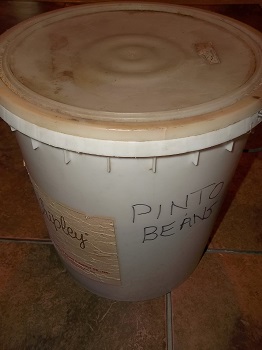 I figured I would briefly mention that over Halloween my mother-in-law wanted to make a huge pot of chili for all of us including some friends which is a normal occurrence for her. Anyway, she didn’t have any recently purchased bags or smaller cans of pinto beans so she dragged out a large 5-gallon bucket of pinto beans that was packed back in 1983 (there’s a sticker with the date) and even though the bucket hadn’t been opened before now the pinto beans were no good.
I figured I would briefly mention that over Halloween my mother-in-law wanted to make a huge pot of chili for all of us including some friends which is a normal occurrence for her. Anyway, she didn’t have any recently purchased bags or smaller cans of pinto beans so she dragged out a large 5-gallon bucket of pinto beans that was packed back in 1983 (there’s a sticker with the date) and even though the bucket hadn’t been opened before now the pinto beans were no good.
Of course, they soaked the beans overnight in cold water like normal and even spent ALL day cooking the chili but to no avail. They even tried again the next day for a few hours but eventually gave up and decided that it was pointless. The thing is that they went ahead and put the bucket of beans back in storage. When I asked why they put the bucket back instead of just tossing it, she said that if they were hungry enough they would still eat the beans. Perhaps.
I wonder if the beans had been packed better initially (such as in mylar bags) and with appropriate oxygen absorbers (I don’t know if the bucket had any and forgot to ask) then maybe they would have been better? Again, I don’t know. But, this does go to show that you cannot always count on such long term food and is yet another reason why the FIFO method is so useful.
Have a wonderful day!

Leave a Reply